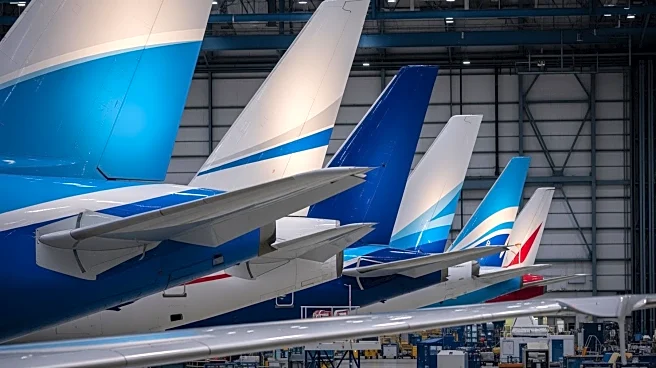What's Happening?
The Federal Aviation Administration (FAA) has authorized Boeing to increase its production of 737 Max airplanes, raising the monthly limit from 38 to 42 units. This decision comes nearly two years after
a door plug incident on an Alaska Airlines jet led to a production cap. The FAA's approval follows extensive safety inspections of Boeing's manufacturing processes to ensure the increase can be achieved safely. Boeing had previously faced challenges such as investigations and a machinists' strike, which affected production rates. The company has now reached the previous cap and sought FAA permission for increased production. Boeing emphasized its commitment to safety and quality, working closely with the FAA to ensure readiness for the production ramp-up.
Why It's Important?
The FAA's decision to allow increased production of the 737 Max is significant for Boeing and the aerospace industry. It marks a step forward in Boeing's recovery from past safety issues, including two fatal crashes linked to the 737 Max's software system. The increase in production could boost Boeing's financial performance and market position, as the 737 Max is a key product in its commercial aircraft lineup. This development also reflects the FAA's confidence in Boeing's improved safety measures and manufacturing processes. However, it underscores the ongoing need for rigorous oversight to maintain safety standards, which is crucial for public trust and the industry's reputation.
What's Next?
Boeing is expected to continue working closely with the FAA to ensure compliance with safety standards as production increases. The company may face scrutiny from lawmakers and industry stakeholders to ensure that safety remains a priority over production targets. The FAA will maintain its oversight of Boeing's production processes, especially given the recent federal government shutdown. Boeing's ability to perform final safety inspections on 737 Max jetliners has been restored, which could streamline the certification process. The company will likely focus on stabilizing its production system to meet the new targets while addressing any remaining safety concerns.
Beyond the Headlines
The increase in 737 Max production could have broader implications for the aerospace supply chain, potentially affecting suppliers and subcontractors involved in the manufacturing process. It may also influence employment levels at Boeing and its partners, as higher production rates could lead to increased demand for skilled labor. Additionally, this development might impact global aviation markets, as airlines look to expand their fleets with newer, more efficient aircraft. The situation highlights the importance of balancing production goals with safety and quality, a challenge that Boeing and other manufacturers must navigate in a competitive industry.












